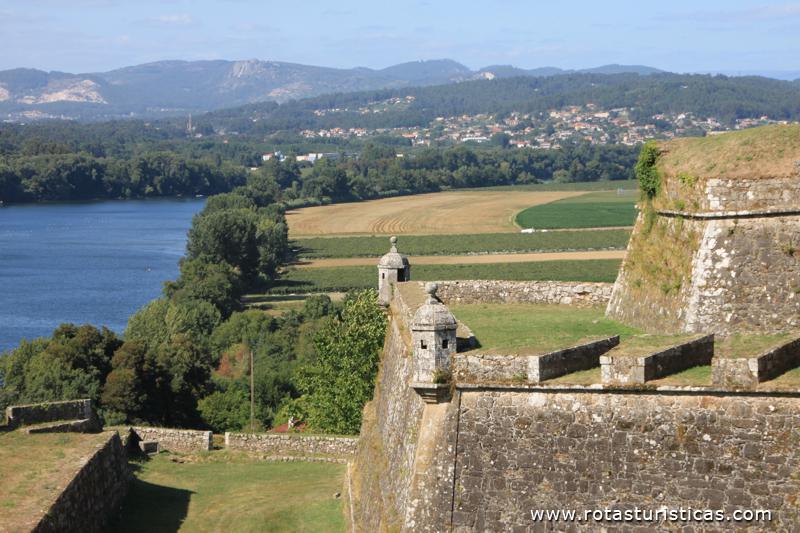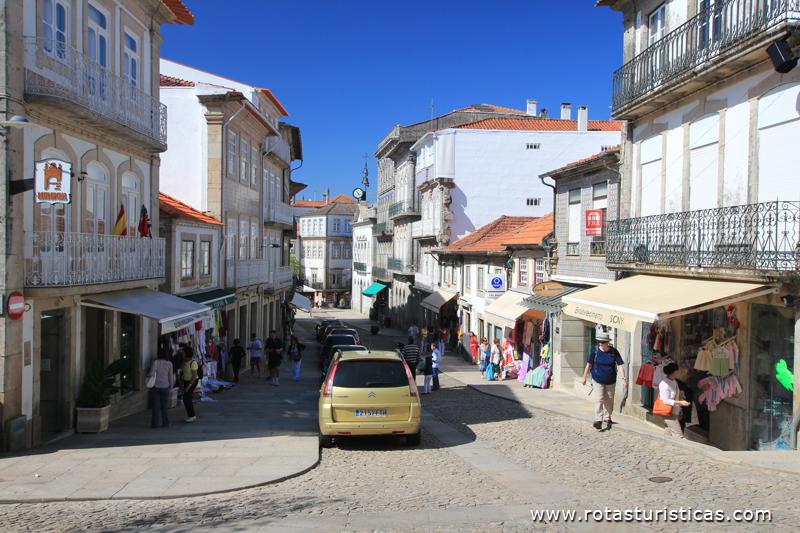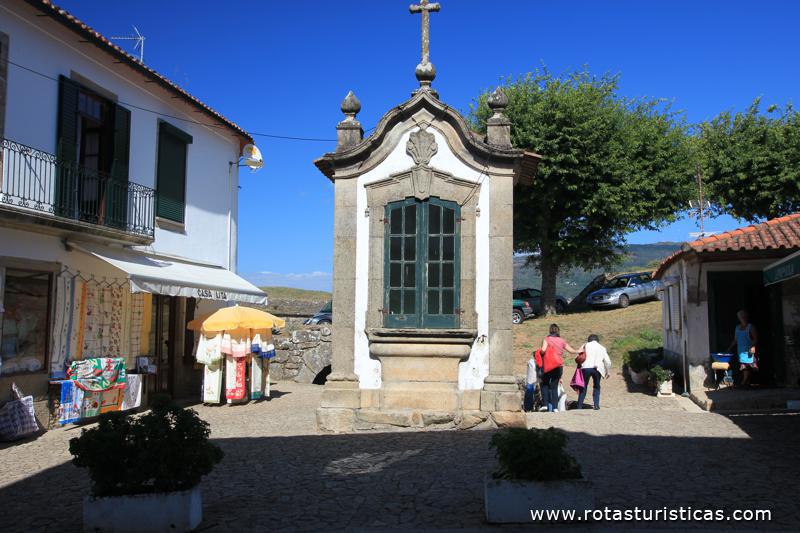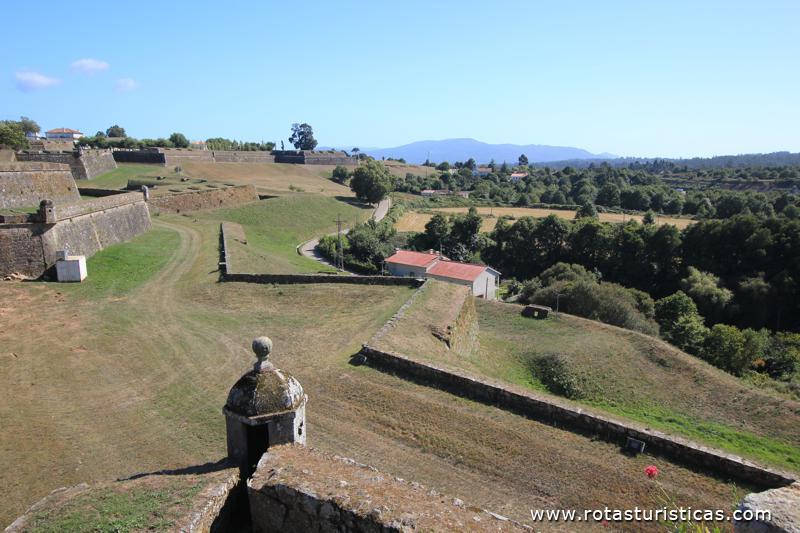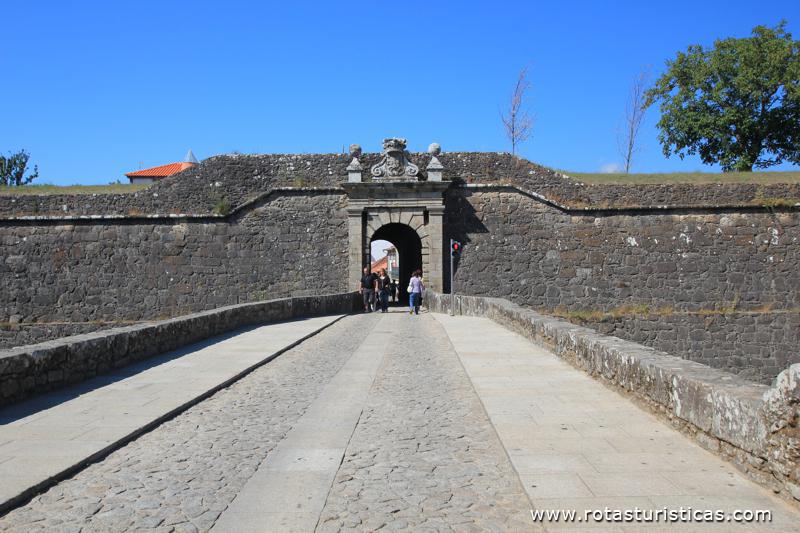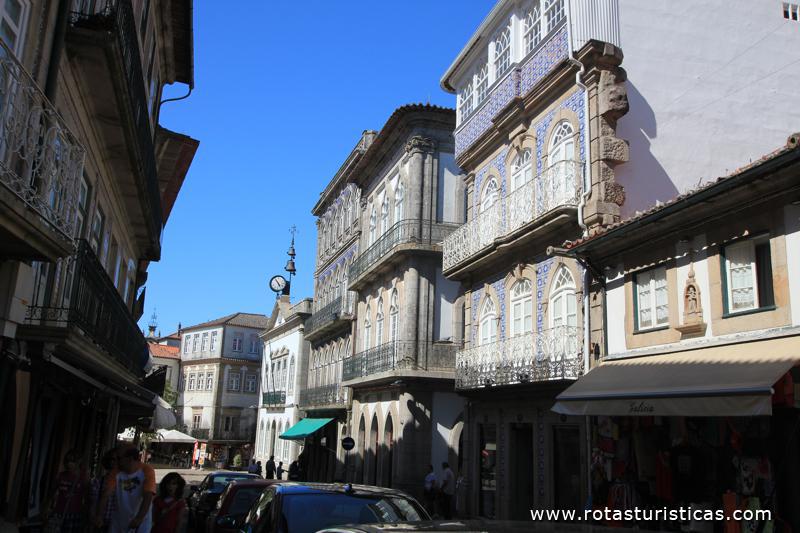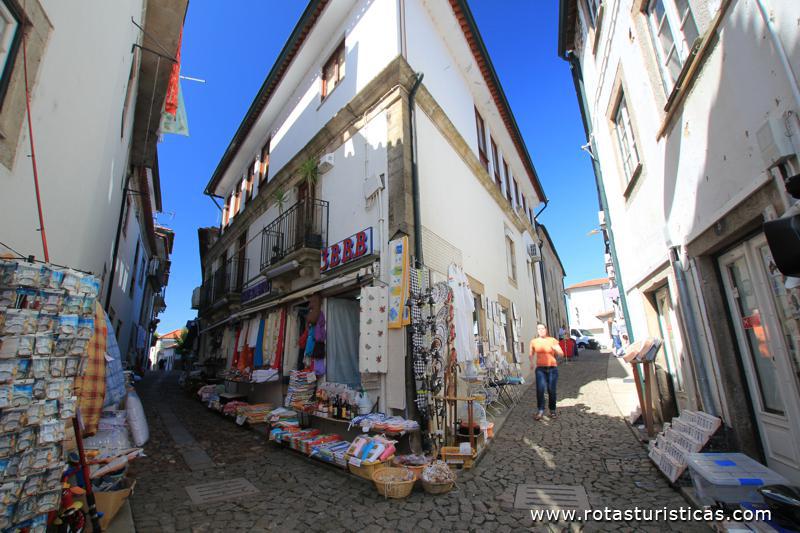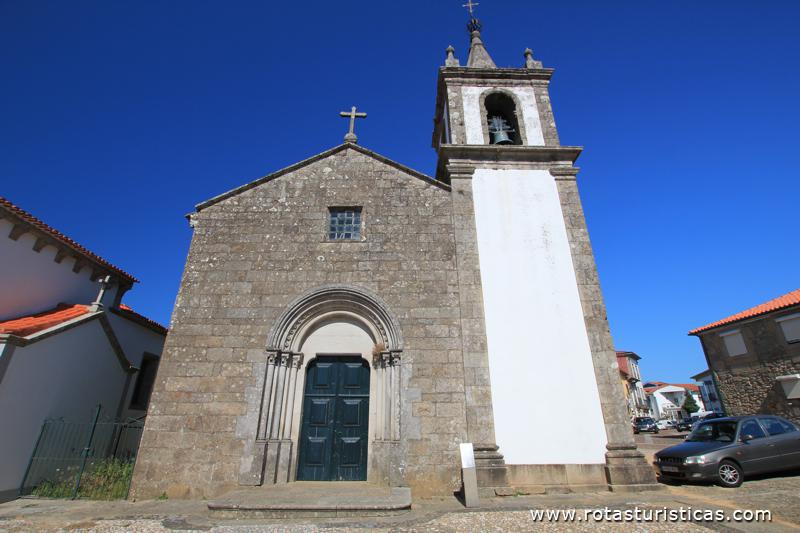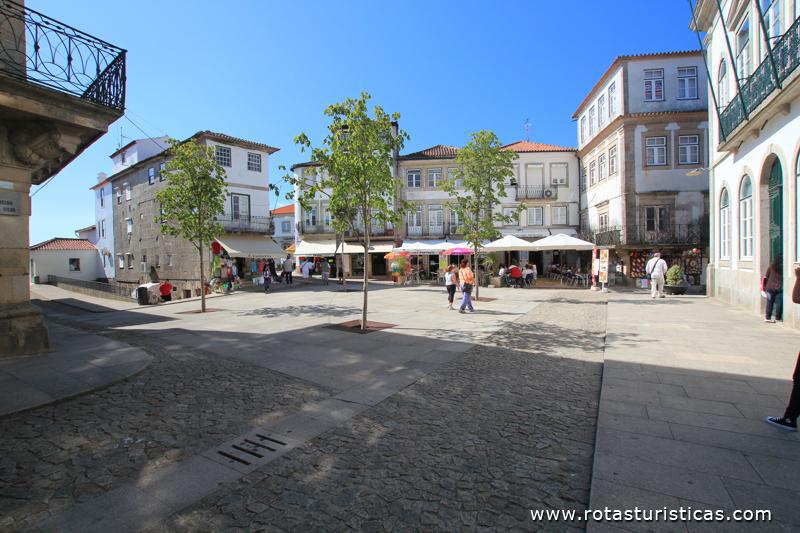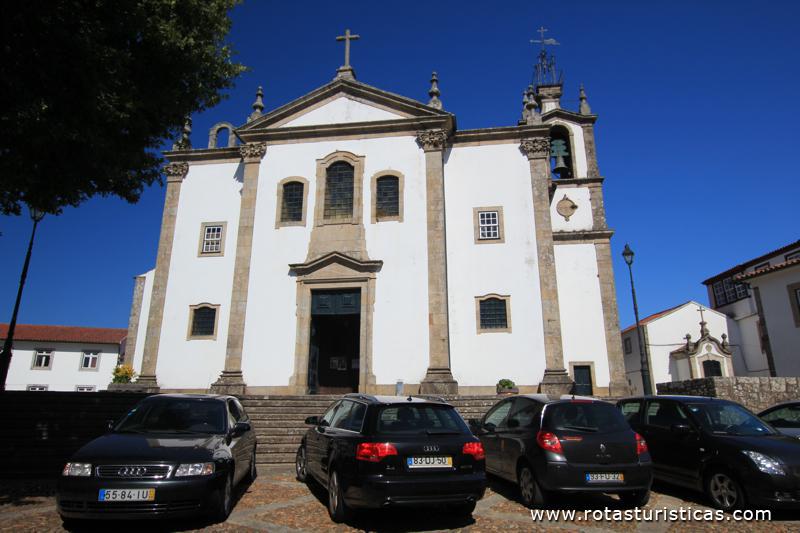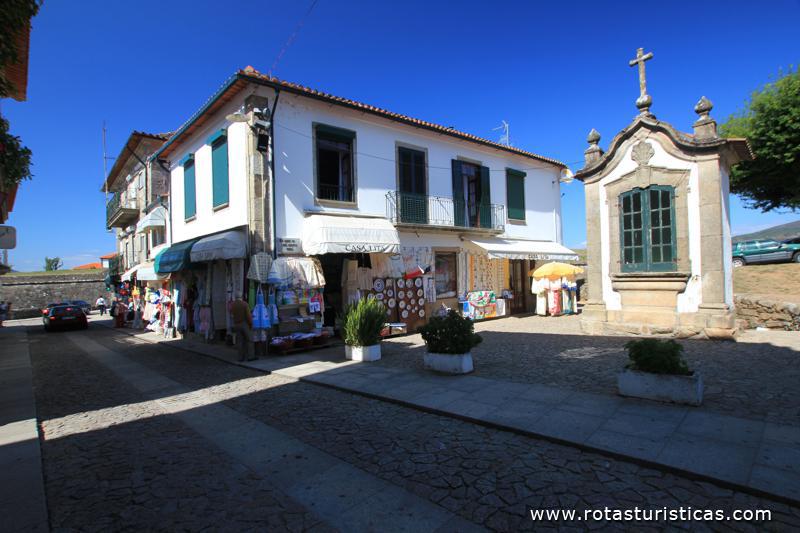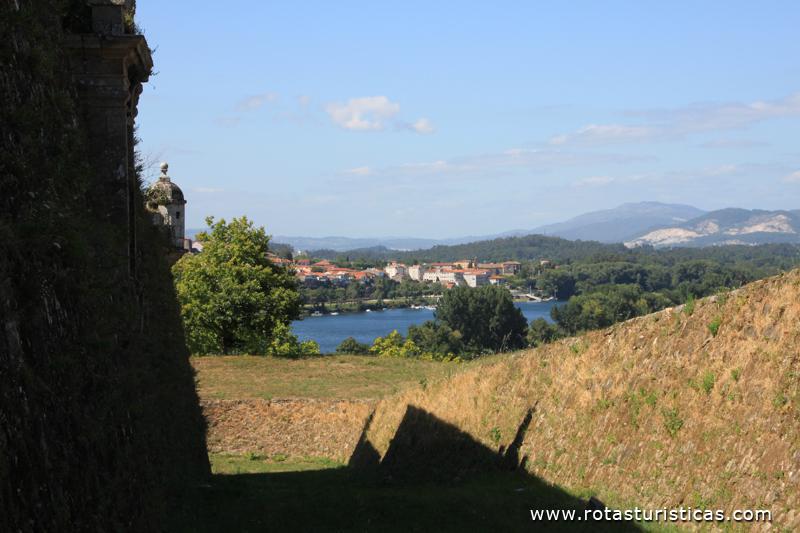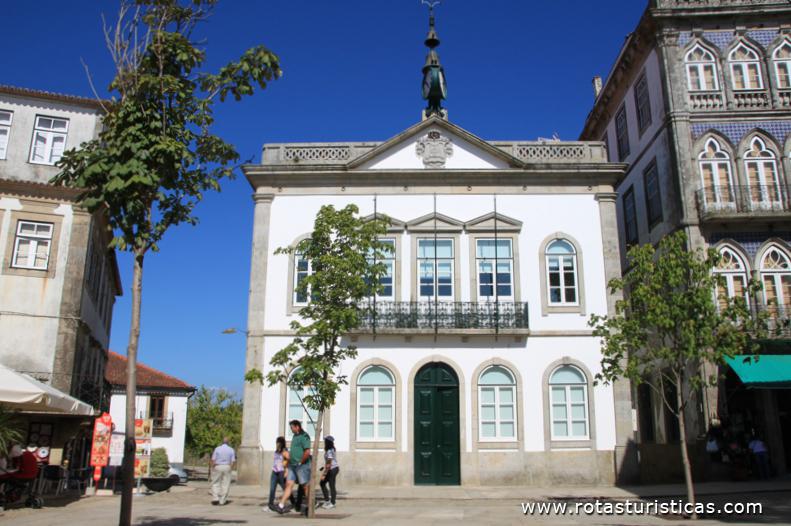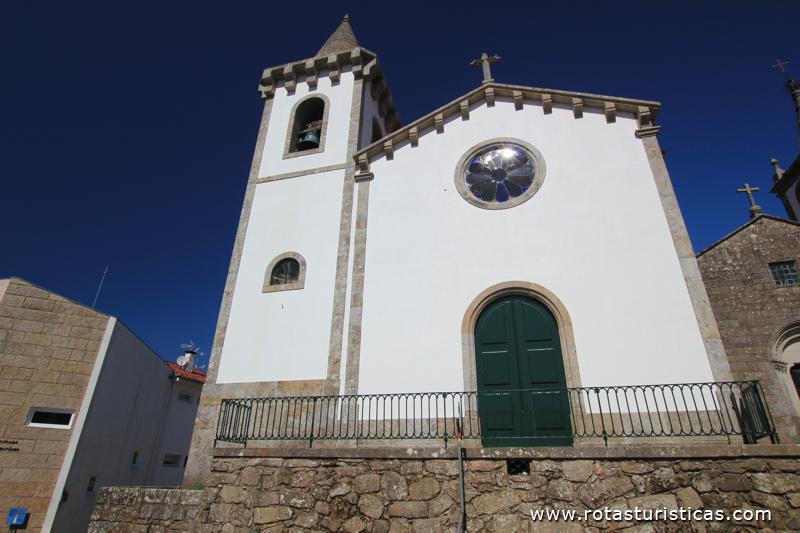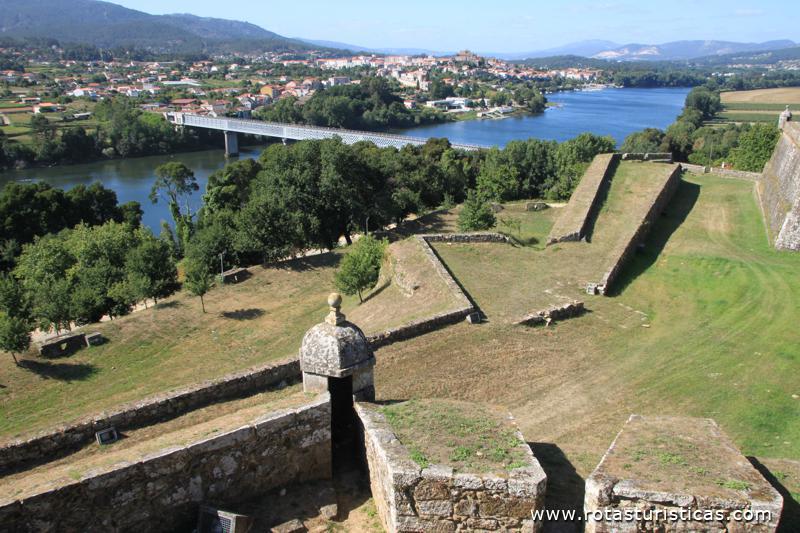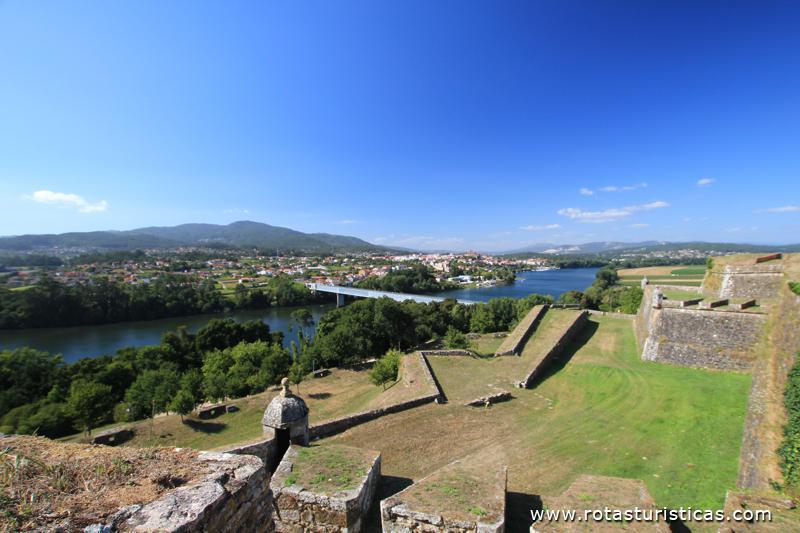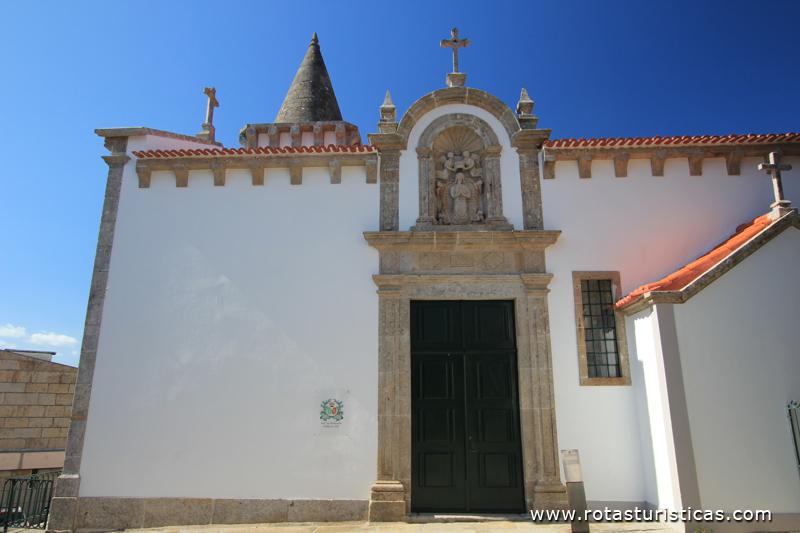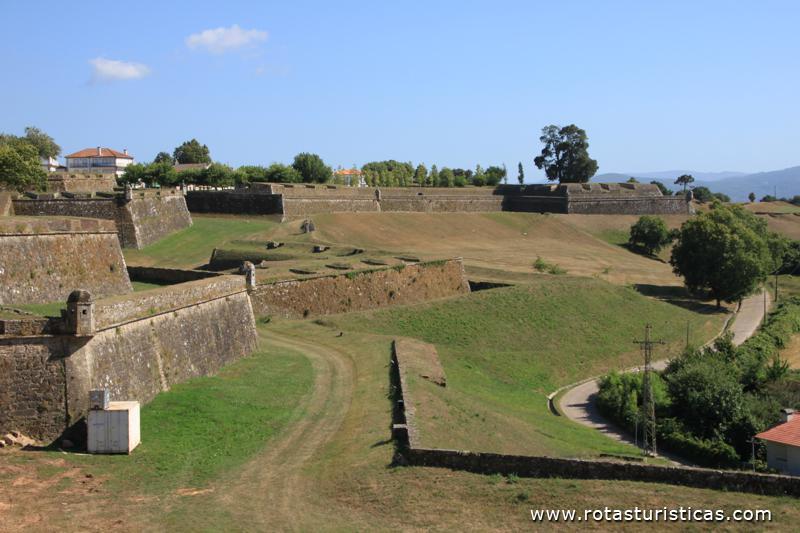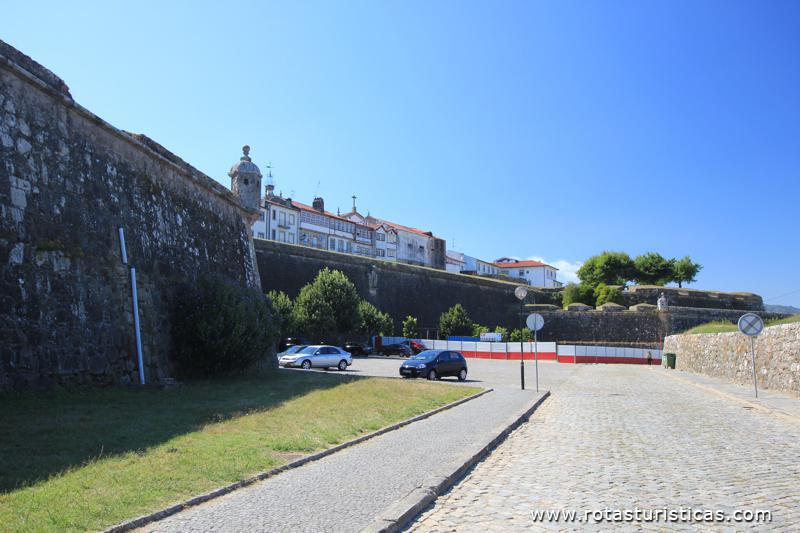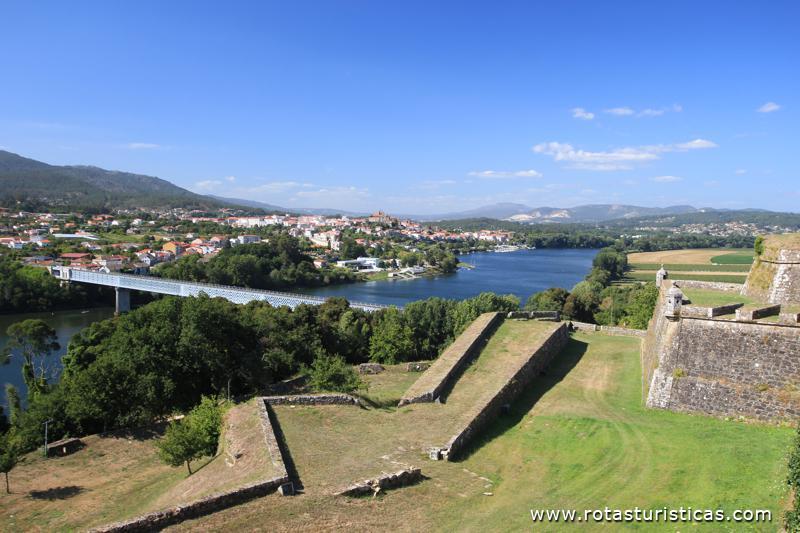Pictures of: Valença do Minho
Location map
Airports
Hotels and other Accommodation
Golf Courses
What to visit
Where to Eat
Where to have fun
Consulates & Embassies
World Nomads
The Travel Insurance with the largest coverage

The Travel Insurance with the largest coverage

Valença do Minho
Between the North of Portugal and Galicia Valença marks the neuralgic center of the Peninsular Northwest. Good access roads and railways, proximity to ports and airports and less than an hour from major cities such as Oporto, Vigo or Braga, Valença is a board, increasingly fixing and enhancing the industrial, tourist, social and human flows of this euro -region.
Historic city and symbol of cross-border relations between Portugal and Spain, Valença is today a multicultural space where the imposing Força-Forte - one of the largest and best preserved military structures in Europe - assumes itself as a bulwark of the identity of a city which reveals a strong social and economic dynamic in the context of Iberian and European integration.
Valencia, is above all a historic city and symbol of cross-border relations between Portugal and Spain. It is today a multicultural space open to modernity and the difference of a global society, without frontiers for the exchange of traditions and heritage values of Humanity.
The environment and heritage are trademarks of Valença, for the exuberant nature, for the bet in the tourism of nature, patrimonial and gastronomic. Valença excels in the art of receiving.
A young city where commerce, industry, services, and the Higher School contribute to give this land future.
Valença is a land that captivates to visit, to discover and to taste in full communion with a unique patrimony and nature.
Historic city and symbol of cross-border relations between Portugal and Spain, Valença is today a multicultural space where the imposing Força-Forte - one of the largest and best preserved military structures in Europe - assumes itself as a bulwark of the identity of a city which reveals a strong social and economic dynamic in the context of Iberian and European integration.
Valencia, is above all a historic city and symbol of cross-border relations between Portugal and Spain. It is today a multicultural space open to modernity and the difference of a global society, without frontiers for the exchange of traditions and heritage values of Humanity.
The environment and heritage are trademarks of Valença, for the exuberant nature, for the bet in the tourism of nature, patrimonial and gastronomic. Valença excels in the art of receiving.
A young city where commerce, industry, services, and the Higher School contribute to give this land future.
Valença is a land that captivates to visit, to discover and to taste in full communion with a unique patrimony and nature.
Tourism
Valença is famous for being the gateway to Portugal for those who make the Portuguese route towards Santiago de Compostela.
The largest tourist attraction in the city of Valença do Minho, the fortress is one of the main European military fortifications, with about 5 km of walled perimeter, located at the top of 2 hills and on the banks of the river Minho on the border with Spain.
Of gothic and baroque military architecture, the fortress began to be erected at the beginning of century XIII with the objective of defense of the town.
In the seventeenth century, Valencia became the target of the Spanish attacks due to the War of Restoration of Portuguese independence. In front of this scenario, the fortified complex was reformed, which implied the expansion of the walls to contemplate the growth of the village, as well as the construction of new moats, revelins, bastions, etc.
Even in reforms, the fortress resisted the first Spanish attack carried out in 1643 at the beginning of the Restoration War, but fell in the Spanish domain in 1654 to be resumed shortly afterwards by Portuguese troops. With the reconquest of the city, the reform of the Fortress was restarted to finally be completed in the early eighteenth century.
However, the fortress again suffered successive attacks during the nineteenth century. The first of these attacks was the invasion of the Napoleonic troops due to the Peninsular War, which culminated with the explosion of the Gate of the Sun. Later the Fort returned to be the scene of dispute as a result of the Portuguese Civil War between absolutists and liberals.
Only in the second half of the nineteenth century did the city of Valença do Minho manage to have peace again.
The fortress underwent several renovations during the 20th century and, despite having suffered several attacks over the years, the fortification remains intact and open for public visitation.
The Fortress of Valença do Minho can gain even more notoriety around the world if the municipality succeeds in its attempt with UNESCO to make Fortaleza a World Heritage Site. The application is expected to be held at the end of 2010 and will be part of the Bordered Fortifications area.
The Historical Center of Valença do Minho is located inside the Fortress that served to protect the old city. This center has a style similar to that found in other cities of Galicia such as the predominance of stones in buildings and narrow streets, but also features characteristics typical of Portuguese cities such as the presence of tiled houses and the architecture of some churches.
Of medieval origin, the Church of Santo Estevão (photo below on the right) became the seat of the Valencian Collegiate and the Bishopric of Ceuta. It underwent major renovations during the late eighteenth century, suffering a change in its architectural style that went from the Romanesque to the neoclassical.
Another important religious landmark for Valença do Minho is the Bom Jesus Chapel, with its baroque and neoclassical style architecture, and the Statue of St. Teotonius, which stands in front of the chapel (photo below on the left). St. Teotonius was the first Portuguese canonized by the Catholic Church and is the patron saint of the city of Valença do Minho, where he was born in the year 1082.
Another demonstration site of the Portuguese Catholic faith is the Misericordia Chapel (pictured on the right). With a much simpler façade than the Bom Jesus Chapel, the Misericórdia Chapel also has baroque and neoclassical architecture and its construction dates back to the 16th century.
In addition to the religious buildings present in the Historic Center, Valença do Minho offers other beautiful examples of architecture to be enjoyed by tourists visiting the city. Good examples are the City Hall (photo above right) and Casa Azul (photo above left) which is the classic Portuguese building with its walls fully lined with Portuguese tiles.
Valença do Minho is well known in the northern region of Portugal and in Galicia due to the strong trade in the area.
The Historical Center of the city is full of shops that sell clothes, towels, household items, among other things.
In addition to the existing trade in the region within the Fortress of Valença, every Wednesday there is a traveling fair in an open area, outside Fortaleza, near Avenida Sá Carneiro, where it is possible to spend all day shopping. In these days, Valença usually receives a flood of people, mainly Galicians who take advantage of the cheapest prices found in Portugal to renovate their wardrobes, to set up a new trousseau or simply to stroll around the area.
This strong presence of Galicians in the area makes the tourist feel like they are in Spain because many pamphlets are written in the Spanish language and even sellers approach you speaking in Spanish.
The largest tourist attraction in the city of Valença do Minho, the fortress is one of the main European military fortifications, with about 5 km of walled perimeter, located at the top of 2 hills and on the banks of the river Minho on the border with Spain.
Of gothic and baroque military architecture, the fortress began to be erected at the beginning of century XIII with the objective of defense of the town.
In the seventeenth century, Valencia became the target of the Spanish attacks due to the War of Restoration of Portuguese independence. In front of this scenario, the fortified complex was reformed, which implied the expansion of the walls to contemplate the growth of the village, as well as the construction of new moats, revelins, bastions, etc.
Even in reforms, the fortress resisted the first Spanish attack carried out in 1643 at the beginning of the Restoration War, but fell in the Spanish domain in 1654 to be resumed shortly afterwards by Portuguese troops. With the reconquest of the city, the reform of the Fortress was restarted to finally be completed in the early eighteenth century.
However, the fortress again suffered successive attacks during the nineteenth century. The first of these attacks was the invasion of the Napoleonic troops due to the Peninsular War, which culminated with the explosion of the Gate of the Sun. Later the Fort returned to be the scene of dispute as a result of the Portuguese Civil War between absolutists and liberals.
Only in the second half of the nineteenth century did the city of Valença do Minho manage to have peace again.
The fortress underwent several renovations during the 20th century and, despite having suffered several attacks over the years, the fortification remains intact and open for public visitation.
The Fortress of Valença do Minho can gain even more notoriety around the world if the municipality succeeds in its attempt with UNESCO to make Fortaleza a World Heritage Site. The application is expected to be held at the end of 2010 and will be part of the Bordered Fortifications area.
The Historical Center of Valença do Minho is located inside the Fortress that served to protect the old city. This center has a style similar to that found in other cities of Galicia such as the predominance of stones in buildings and narrow streets, but also features characteristics typical of Portuguese cities such as the presence of tiled houses and the architecture of some churches.
Of medieval origin, the Church of Santo Estevão (photo below on the right) became the seat of the Valencian Collegiate and the Bishopric of Ceuta. It underwent major renovations during the late eighteenth century, suffering a change in its architectural style that went from the Romanesque to the neoclassical.
Another important religious landmark for Valença do Minho is the Bom Jesus Chapel, with its baroque and neoclassical style architecture, and the Statue of St. Teotonius, which stands in front of the chapel (photo below on the left). St. Teotonius was the first Portuguese canonized by the Catholic Church and is the patron saint of the city of Valença do Minho, where he was born in the year 1082.
Another demonstration site of the Portuguese Catholic faith is the Misericordia Chapel (pictured on the right). With a much simpler façade than the Bom Jesus Chapel, the Misericórdia Chapel also has baroque and neoclassical architecture and its construction dates back to the 16th century.
In addition to the religious buildings present in the Historic Center, Valença do Minho offers other beautiful examples of architecture to be enjoyed by tourists visiting the city. Good examples are the City Hall (photo above right) and Casa Azul (photo above left) which is the classic Portuguese building with its walls fully lined with Portuguese tiles.
Valença do Minho is well known in the northern region of Portugal and in Galicia due to the strong trade in the area.
The Historical Center of the city is full of shops that sell clothes, towels, household items, among other things.
In addition to the existing trade in the region within the Fortress of Valença, every Wednesday there is a traveling fair in an open area, outside Fortaleza, near Avenida Sá Carneiro, where it is possible to spend all day shopping. In these days, Valença usually receives a flood of people, mainly Galicians who take advantage of the cheapest prices found in Portugal to renovate their wardrobes, to set up a new trousseau or simply to stroll around the area.
This strong presence of Galicians in the area makes the tourist feel like they are in Spain because many pamphlets are written in the Spanish language and even sellers approach you speaking in Spanish.
Gastronomy
Valenca, the Fronteira and the Fortress of world value, the traditional commerce, the green of Minho and centuries to ascertain the taste and the recipes, make Valença a privileged gastronomic destination, awarded with one of the 7 wonders of Portuguese gastronomy, is searched daily by thousands of visitors.
Land where the Cod is King! Come try the Bacalhau à São Teotónio, savor the tradition with Caldo Verde, one of the 7 gastronomic marvels of Portugal and try the Borrachinhos de Valença, a unique confectionery.
Land where the Cod is King! Come try the Bacalhau à São Teotónio, savor the tradition with Caldo Verde, one of the 7 gastronomic marvels of Portugal and try the Borrachinhos de Valença, a unique confectionery.
Weather
The climate is hot and temperate in Valença do Minho. Summer has much less rainfall than winter.
According to Köppen and Geiger the climate classification is Csb. 14.8 ° C is the average temperature in Valença do Minho. 1304 mm is the average annual rainfall.
According to Köppen and Geiger the climate classification is Csb. 14.8 ° C is the average temperature in Valença do Minho. 1304 mm is the average annual rainfall.
Other tourist destinations in:
Portugal
Portugal
Other world tourist destinations
Why to book with
The best prices
Our partnerships with the world´s largest operators offer research on the best market prices.
More options
At Rotas Turisticos you can book the hotel, buy the air ticket, book the transfer from the airport to the hotel and vice versa, book the local excursions, rent the car, take travel insurance and consult the places to visit and where to go.
Holiday Tips & Destinations
Hundreds of holiday destinations with all the options that allow you to easily choose the destination that best suits your dream vacation.
Links

